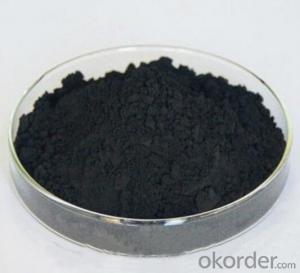High Density Black&White Masterbatch Special-purpose color Masterbatch
- Loading Port:
- China main port
- Payment Terms:
- TT OR LC
- Min Order Qty:
- 25 kg
- Supply Capability:
- 1000000 kg/month
OKorder Service Pledge
OKorder Financial Service
You Might Also Like
Specification
Application & Features
This series of products use PP as the substrate. lt has characteristics such as Easy coloring,Non-toxic,Tasteless,weathering strong,No leakage and migration.There will be No bubble and pocking mark while producing,meanwhile,it enhance pipes stiffness and toughness.
Technical Specification
General Information | ||
Product Name | : | High Density Black&White Masterbatch |
Physical and Chemical Specification | ||
Packaging | : | Unit Kraft bag |
Carrier Resin | : | PE |
Melting Temperature | : | > 100° C |
Appearance | : | Uniform granule |
Light Fastness | : | 5(ISO Blue Wool Scale) |
Heat Stability | : | 240 ° C |
Application | : | Injection & Extruding moulding , |
Letdown Rate | : | 2 % ~ 4% |
Color difference | : | ΔE<0.3 0.3 |
MFI(ASTM D-1238,190°C,2.16kg) () | : | 21± 5 grams/ 10 minutes |
Moisture(ASTM-4019) | : | 0.5 % |
Granule count/gram | : | 30-50 |
Granule length (L) | : | 2.5 – 3.5 mm |
Granule diameter (D) | : | 2 – 3 mm |
- Q: Please and thank you, it doesn't say so on the website.
- Mac Pigment Ingredients
- Q: What pigments are used in photosynthesis?
- Chlorophyll(green) is the primary pigment used in photosynthesis. Besides chlorophyll, plants also use pigments such as carotenes(orange) and xanthophylls(yellow).
- Q: What does it mean when something is highly pigmented?
- Pigment is the concentration of color in a substance of matter. So when something is highly pigmented it means that the color is vibrant and rich :)
- Q: I am trying to decide what kind of eyeshadow I should but I want something really pigmented and nice.
- MAC's eyeshadows are very pigmented, definitely worth the money. They have packed eyeshadows and loose pigments and both are extremely pigmented. I'm sorry for using the word pigmented so much. XD You could also get Urban Decay eyeshadows, those are pigmented as well, but they're usually more expensive than MAC eyeshadows.
- Q: Pleaseeeeee answer A.S.A.P Pleaseeee! Are pigments haram?
- Pigments are extracted from plants as well as animals . For more kindly click on the link below = en.wikipedia.org/wiki/Biological_... Most of the pigments that we use are either from plants ,from minerals or synthetic in origin . Most of the edible pigments are synthetic or from plants so they are not haram . It is now compulsory to indicate any animal material used in any edible product including tooth pastes by a deep red square on the label . If it is 100% plant product then green squre is shown on the label . So you can judge if it is Haram or not by yourself.
- Q: I'm onto black-berry.. I wonder what else is available in 98362.
- Pigments from the past came from rocks, minerals, plants, and other natural materials. Those things are all still available. You can take classes at some universities that teach how to make your own paints, or dry pigments. For native American pigments, you have to research which tribe used which colors. To be totally authentic you could visit the tribe of your choice and see if you can learn from them. Sticking to your own zip code will not net you much, usually.
- Q: light absorption, which pigments are involved?
- All photosynthetic organisms contain one or more organic pigments capable of absorbing visible radiation, which will initiate the photochemical reactions of photosynthesis. The three major classes of pigments found in plants and algae are the chlorophylls, the carotenoids and the phycobilins. Carotenoids and phycobilins are called accessory pigments since the quanta (packets of light) absorbed by these pigments can be transferred to chlorophyll. Chlorophylls chlorophyll a - present in all higher plants and algae chlorophyll b - present in all higher plants and green algae chlorophyll c - diatoms and brown algae chlorophyll d - red algae (chlorophyll a is present in all photosynthetic organisms that evolve O2.) Chlorophyll molecules contain a porphyrin 'head' and a phytol 'tail'. The polar (water-soluble) head is made up of a tetrapyrrole ring and a magnesium ion complexed with the nitrogen atoms of the ring. The phytol tail extends into the lipid layer of the thylakoid membrane. Carotenoids (carotenes and xanthophylls) Carotenes: -carotene - higher plants and most algae $-carotene - most plants some algae xanthophylls: luteol, fucoxanthol and violaxanthol Carotenoids contain a conjugated double bond system of the polyene type (C-C=C-C=C). Energy absorbed by carotenoids may be transferred to chlorophyll a for photosynthesis. Phycobilins (found mostly in red and blur-green algae): phycoerythrin phycocyanin allophycocyanin )
- Q: what are accessory pigments?
- Accessory pigments are light-absorbing compounds, found in photosynthetic organisms, that work in conjunction with chlorophyll a. They include other forms of this pigment, such as chlorophyll b in green algal and higher plant , while other algae may contain chlorophyll c or d. In addition, there are many non-chlorophyll accessory pigments, such as carotenoids or phycobiliproteins which also absorb light and transfer that light energy to photosystem chlorophyll. Some of these accessory pigments, particularly the carotenoids, also serve to absorb and dissipate excess light energy, or work as antioxidants. The different chlorophyll and non-chlorophyll pigments associated with the photosystems all have different absorption spectra, either because the spectra of the different chlorophyll pigments are modified by their local protein environment, or because the accessory pigments have intrinsic structural differences. The result is that, in vivo a composite absorption spectrum of all these pigments is broadened and flattened such that a wider range of visible and infrared radiation is absorbed by plants and algae. Most photosynthetic organisms do not absorb green light well, thus most remaining light under leaf canopies in forests or under water with abundant plankton is green, a spectral effect called the green window. Organisms such as some cyanobacteria and red algae contain accessory phycobiliproteins that absorb green light reaching these habitats. For more kindly click on the links below --- en.wikipedia.org/wiki/Accessory_p... en.wikipedia.org/wiki/Photosynthe...
- Q: I am planning on purchasing MAC, but what r the differences... thanks to all...I want to have an idea before I head to the mall.
- Pigment is the purest formula or color with minimal ingredients mixed in to buffer or thin out the product. Generally, the loose form is the most intense because it is lightweight and you can pack it on, mix with a medium, or layer. Pigments usually cost more than pressed forms. However, there are some pressed pigment shadows that are awesome (NARS, Make up for Ever, Urban Decay)! MAC has excellent shadows, I use a lot of them (loose pressed) in my kit. Loose pigments are great mixed with water or mixing medium to intensify. They also will last you forever!
Send your message to us
High Density Black&White Masterbatch Special-purpose color Masterbatch
- Loading Port:
- China main port
- Payment Terms:
- TT OR LC
- Min Order Qty:
- 25 kg
- Supply Capability:
- 1000000 kg/month
OKorder Service Pledge
OKorder Financial Service
Similar products
Hot products
Hot Searches
Related keywords























